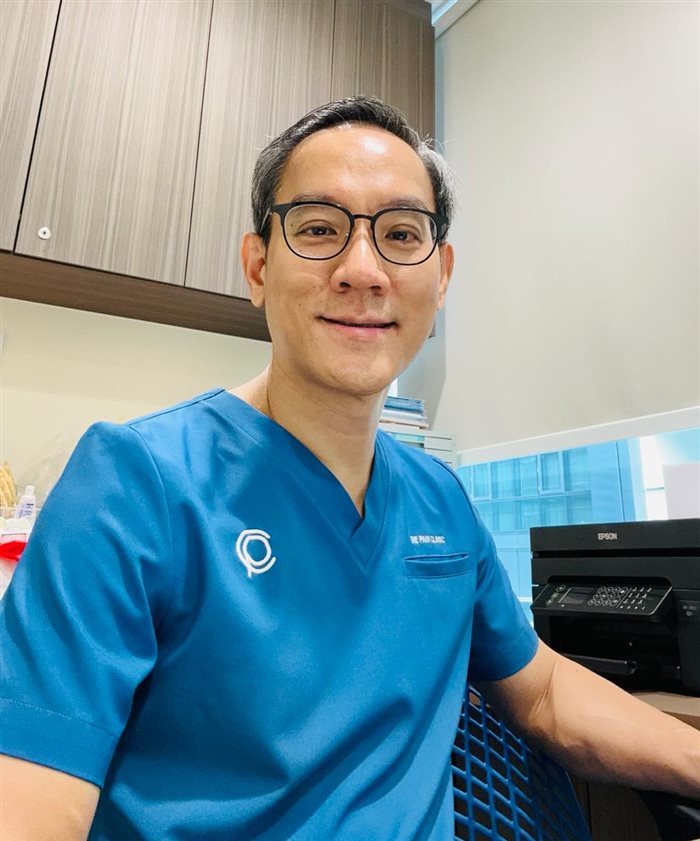
Hi, Dr. Ho. Why is September 2024 important to you?
September is Pain Awareness Month, started by the U.S. Pain Foundation back in 2001 to help people understand chronic pain and the challenges faced by those living with it. This month is special because we’re also launching our brand-new website!
Our old website was taken down by malware—just like how pain can knock us down, bringing life to a stop. But we’re back, better and stronger! I think this mirrors how we should approach pain management—get back up, stronger than before.
What’s IASP’s role in Pain Awareness Month?
IASP, or the International Association for the Study of Pain, plays a big part in Pain Awareness Month every year. They help highlight different aspects of pain by focusing on specific topics each week in September. This year, the themes are:
- Week 1: Sex and Gender Differences in Pain
- Week 2: Chronic Pain
- Week 3: Rare Conditions
- Week 4: Scientific Research and Advances in Pain Treatment
That sounds interesting! How do sex and gender affect pain?
Research shows that men and women experience pain differently. For example, women are more likely to suffer from conditions like fibromyalgia and migraine, and they often feel pain more intensely. There are biological reasons, like hormones, but also social factors, like how men and women are treated differently in healthcare.
The problem is, most medical research has traditionally focused on men, so sometimes women’s pain isn’t understood as well, or it’s not treated properly. Raising awareness and educating healthcare providers can help fix this.
Chronic pain is a big issue worldwide. Can you explain what chronic pain is and how it’s treated?
Chronic pain is pain that lasts for more than three months. It can affect any part of your body and, unlike acute pain (which is your body’s natural reaction to an injury or illness), chronic pain sticks around even when the cause is gone. It's like your body’s pain response has gone haywire.
Treating chronic pain is complicated and usually involves more than just medication. We use a mix of treatments, including physical therapy, psychological support, and sometimes lifestyle changes. The goal isn’t always to get rid of the pain completely but to improve your quality of life so you can do the things that matter to you.
Can you give examples of rare pain conditions and how they impact patients and doctors?
Rare conditions like Complex Regional Pain Syndrome (CRPS) and fibromyalgia can be tough for both patients and doctors. CRPS is a severe, long-lasting pain commonly affecting the limbs that usually starts after an injury or surgery, but the pain is way worse than you’d expect. Fibromyalgia causes widespread muscle pain, chronic fatigue, poor sleep, and may be associated with depression and anxiety symptoms.
These conditions can be hard to diagnose because there aren’t any specific tests for them. Patients often see multiple doctors before getting the right diagnosis, which can be frustrating. As doctors, it’s important that we listen carefully and keep up with the latest research so we can provide the best care possible.
How has research changed pain management?
Research has completely transformed how we manage pain, and it’s constantly evolving. For example, treatments like radiofrequency ablation and spinal cord stimulation have helped patients who have tried everything else.
We’re also learning more about how pain works, leading to new approaches in neuromodulation (changing the way nerves send pain signals) and regenerative medicine (helping the body heal itself). Investing in pain research is important to keep finding better treatments and improving lives.
Any last thoughts, Dr. Ho?
Chronic pain is like other long-term conditions, such as hypertension, diabetes or arthritis. We can’t always cure it, but we can manage it. Don’t expect a magic pill or one quick fix. Managing chronic pain involves making lifestyle changes, exercising, and sometimes changing how you think about pain. You must be an active part of your treatment – and we walk this journey with you. That’s a promise.